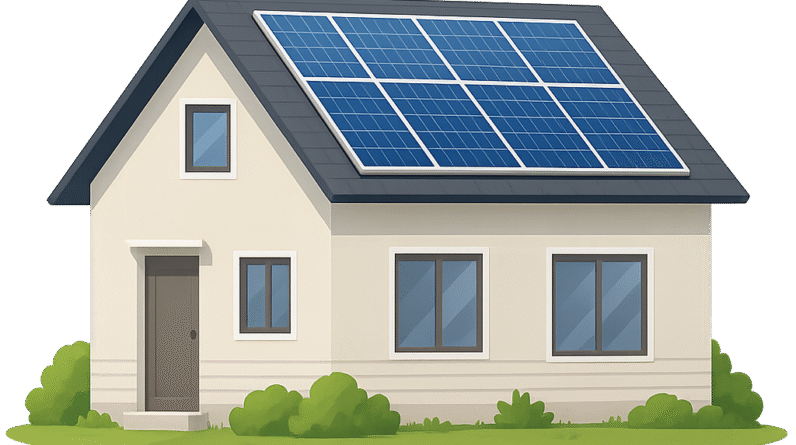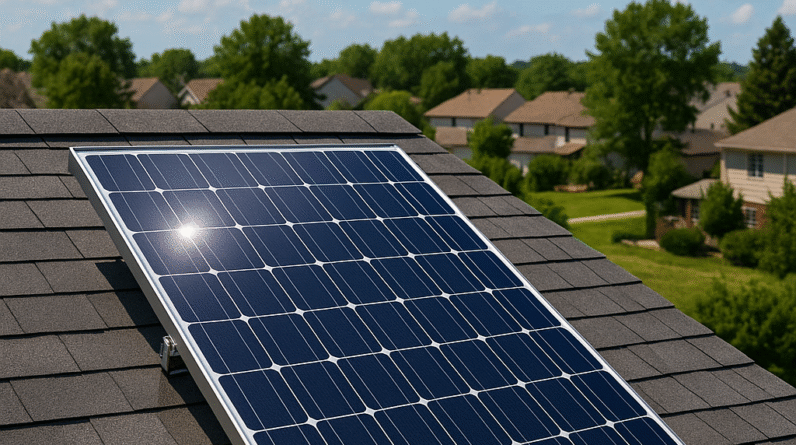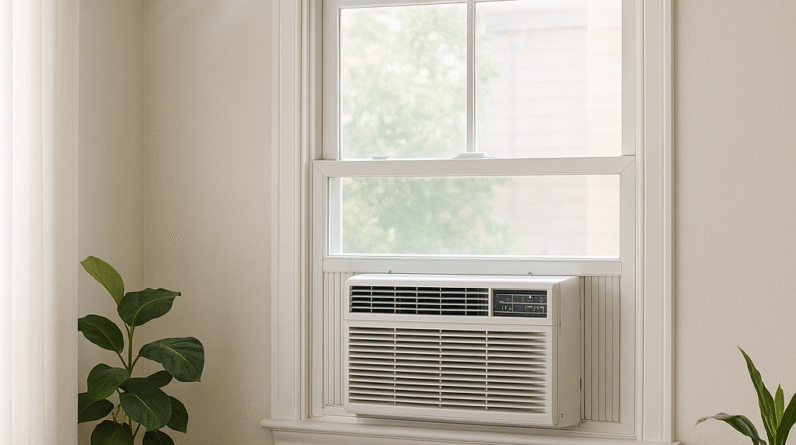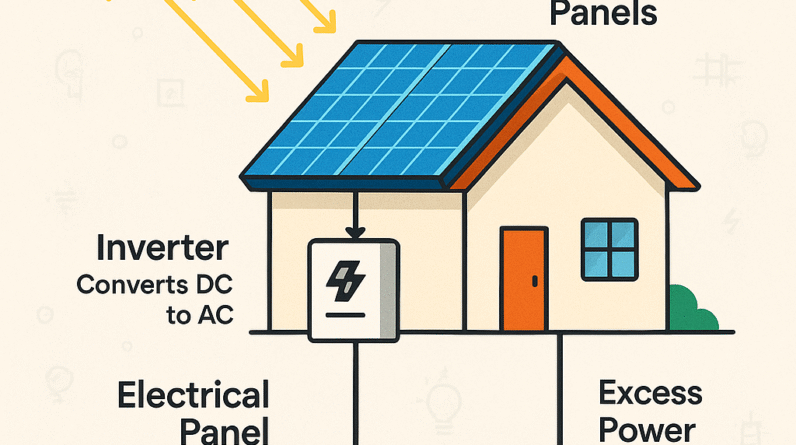
How Cold Is Too Cold For Solar Panels?
Are you wondering how temperature affects the performance of solar panels? Well, we’ve got the answer for you! In this article, we’ll explore the effects of extreme cold on solar panels and determine at what point the temperature becomes too frigid for optimal functioning. So, if you’re curious about whether your solar panels can withstand the chilliest of conditions, keep reading to find out all the ins and outs of solar panel functionality in the cold.
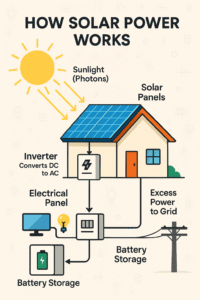
Effects of Cold Temperature on Solar Panels
Decreased Efficiency
Cold temperatures can have a significant impact on the efficiency of solar panels. As temperatures drop, the performance of solar panels tends to decrease. This is due to the fact that photovoltaic cells operate on the principle of converting sunlight into electricity, and cold temperatures can affect the conductivity of the materials used in the cells. As a result, the overall energy production of the panels is reduced, leading to a decrease in their efficiency.
Increased Risk of Damage
Not only does cold weather impact the efficiency of solar panels, but it can also pose a risk of damage. Cold temperatures can cause thermal stress on the panels, leading to cracks or fractures in the cells. Additionally, extreme cold can also cause freezing of any moisture that may have penetrated the panels, which can further damage the cells. It is important to take measures to protect solar panels from these potential risks in order to ensure their longevity and optimal performance.
Thermal Cycling
Thermal cycling refers to the repeated expansion and contraction of the materials used in solar panels due to temperature fluctuations. This process can be particularly pronounced in cold climates, where there can be significant temperature variations between day and night. The repeated expansion and contraction can cause fatigue in the materials over time, potentially leading to the degradation of the solar panels. Therefore, it is crucial to choose materials that are capable of withstanding these thermal cycles in order to maintain the longevity and performance of the panels.
Factors Affecting Cold Tolerance of Solar Panels
Type of Solar Panel
The type of solar panel installed can have an impact on its cold tolerance. Different technologies, such as monocrystalline, polycrystalline, and thin-film panels, have varying levels of tolerance to cold temperatures. Generally, monocrystalline panels have higher cold tolerance compared to polycrystalline and thin-film panels. It is important to consider the cold tolerance of the chosen panel technology when installing solar panels in cold climates to ensure their optimal performance.
Quality of Components
The quality of the components used in the solar panel system can also influence its cold tolerance. High-quality components, such as durable frames and tempered glass, are essential for withstanding the harsh conditions of cold environments. Additionally, selecting high-efficiency solar cells with good temperature coefficients can help mitigate the decrease in performance due to cold temperatures. Investing in high-quality components is crucial to ensure the longevity and effectiveness of solar panels in cold climates.
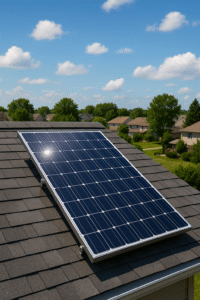
Installation Angle
The angle at which solar panels are installed can affect their cold tolerance. In cold climates with a higher angle of incidence of the sun’s rays, it is advisable to install the panels at a steeper angle. This allows snow and ice to slide off the panels more easily, reducing the risk of damage and optimizing their performance. Adjusting the installation angle based on the specific conditions of the cold environment can help maximize the efficiency and lifespan of the solar panel system.
Insulation
Proper insulation is essential to protect solar panels from the detrimental effects of cold weather. By insulating the backside of the panels, heat loss can be minimized, helping to maintain higher panel temperatures and improved performance. Insulating the wiring and connections is also important to prevent freezing and damage to the electrical components. Adequate insulation measures should be taken to ensure the efficient functioning of solar panels in cold climates.
Environmental Conditions
Apart from the specific characteristics of the solar panel system, environmental conditions also play a role in its cold tolerance. Factors such as wind speed, humidity, and snowfall can impact the overall performance and durability of solar panels in cold climates. For instance, excessive wind can increase convective heat loss and cause mechanical stress on the panels, while heavy snow accumulation can obstruct sunlight and decrease energy production. Considering and adapting to the environmental conditions of the cold region is crucial for ensuring the optimal functioning of solar panels.
Temperature Ranges for Optimal Performance
Minimum Temperature Limit
Solar panels have a minimum temperature limit below which they may cease to function altogether. Generally, solar panels can typically operate at temperatures as low as -40°C. However, it is important to note that their performance and efficiency decrease significantly as temperatures approach this lower limit. It is crucial to consider this minimum temperature limit when installing solar panels in cold environments to ensure their continuous operation.
Ideal Operating Temperature
Solar panels operate most efficiently within a specific temperature range known as the ideal operating temperature. This range is typically between 25-35°C, depending on the specific technology and design of the panels. Within this temperature range, the conductivity of the materials used in the panels is optimized, resulting in higher energy production. Maintaining the panels within this ideal operating temperature range can help maximize their performance in cold climates.
Maximum Temperature Limit
Similar to the minimum temperature limit, solar panels also have a maximum temperature limit that they can withstand. Exceeding this limit can lead to a decrease in performance and potentially cause damage to the panels. The maximum temperature limit varies depending on the type of solar panel technology and other factors. In general, most solar panels can withstand temperatures up to 85-90°C. Ensuring that the panels do not exceed this limit is important for their longevity and optimal functioning.
Impact of Extreme Cold on Solar Panel Efficiency
Effect on Power Output
Extreme cold temperatures can significantly impact the power output of solar panels. As the temperature drops, the conductivity of the materials used in the panels decreases, resulting in a decrease in the power output. The decrease in power output is more noticeable in crystalline silicon solar panels compared to thin-film solar panels. Therefore, it is important to account for this potential decrease in power output when designing and installing solar panel systems in cold climates.
Effect on Voltage and Current
Extreme cold temperatures can also affect the voltage and current output of solar panels. The decreased conductivity of the materials used in the panels results in higher resistance, leading to a decrease in the voltage and current produced by the panels. This decrease in voltage and current can have implications for the overall performance and efficiency of the solar panel system. It is essential to consider these effects when designing and operating solar panels in cold environments.
Effect on Overall System Performance
The combined effects of decreased power output, voltage, and current can result in a decrease in the overall performance of the solar panel system. In extreme cold temperatures, the system may not generate enough electricity to meet the energy needs, and in some cases, it may even stop functioning. This highlights the importance of understanding the impact of extreme cold on solar panel efficiency and taking appropriate measures to ensure the optimal performance of the entire system.
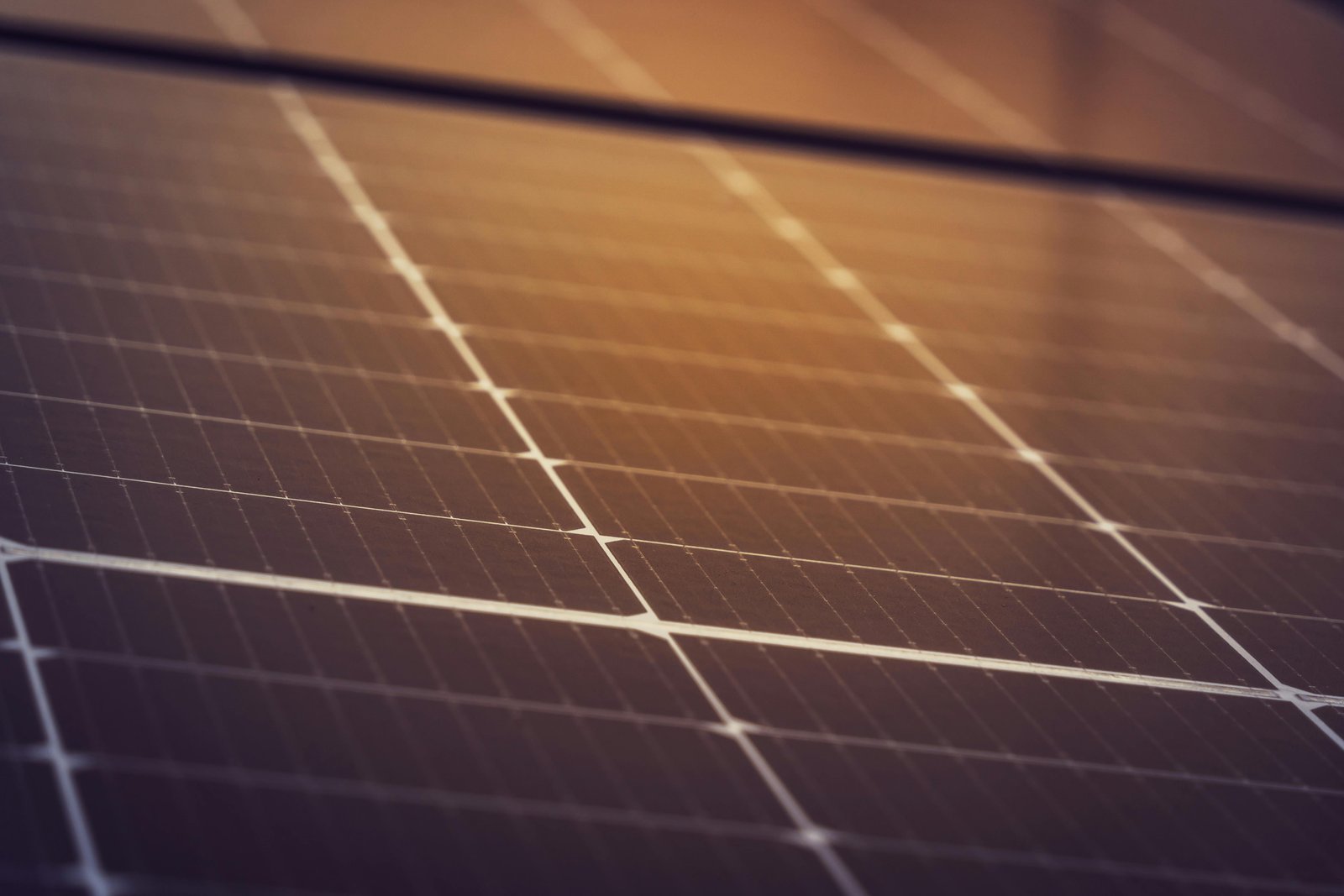
Protective Measures for Cold Weather
Heating Systems
One effective measure to mitigate the effects of cold weather on solar panels is the use of heating systems. Heating systems can be installed beneath the solar panels to warm them up and prevent the formation of ice and snow. This helps maintain the conductivity of the materials and ensures the panels continue to generate electricity effectively. Various heating systems, such as electric heating elements or fluid-based systems, can be utilized depending on the specific requirements and resources available.
Snow Removal
Regular snow removal is essential to ensure the optimal performance of solar panels in cold climates. Accumulated snow on the panels can block sunlight, reducing energy production. Snow removal techniques include using soft brooms or brushes to gently remove snow without damaging the panels or using specialized tools designed specifically for snow removal from solar installations. Implementing a snow removal strategy is crucial to maximize the solar panels’ performance during the winter months.
Insulation
Proper insulation is crucial to protect solar panels from the cold temperatures. Insulating the backside of the panels helps to minimize heat loss and maintain higher panel temperatures. Insulation can be achieved by using materials such as foam boards or insulation blankets. Additionally, insulating the wiring and connections helps prevent freezing and damage to the electrical components. Adequate insulation measures should be taken to ensure the efficient functioning of solar panels in cold climates.
Monitoring and Maintenance
Regular monitoring and maintenance are essential for identifying and addressing any issues that may arise due to cold weather conditions. This includes inspecting the panels for damage or cracks, checking for proper functioning of heating systems, and ensuring the removal of any snow or ice accumulation. Additionally, routine maintenance procedures, such as checking electrical connections and cleaning the panels, help optimize their performance and longevity in cold environments. Regular monitoring and maintenance are crucial for the efficient operation of solar panels throughout the colder seasons.
Case Studies of Solar Panel Performance in Cold Climates
Northern European Countries
Northern European countries, such as Norway and Sweden, experience long and harsh winters with extremely low temperatures. Despite these challenging conditions, solar panels have been successfully installed and operated in these regions. Proper design considerations, including selecting high-quality components and utilizing efficient heating systems and insulation, have helped mitigate the effects of cold weather. Additionally, regular snow removal procedures and maintenance, along with optimal installation angles, have contributed to the overall performance and success of solar panel systems in these cold climates.
High Altitude Installations
Solar panels installed at high altitudes are subject to even colder temperatures and extreme weather conditions. However, innovative strategies and technologies have enabled the successful use of solar panels in these challenging environments. Deploying efficient heating systems and insulation, along with implementing snow removal measures, help maintain optimal performance. Additionally, advanced monitoring and maintenance techniques play a vital role in ensuring the continuous operation of solar panels at high altitudes.
Arctic and Antarctic Regions
Solar panels in the Arctic and Antarctic regions face some of the harshest and coldest conditions on the planet. Despite the extreme cold and extended periods of darkness, solar panels have been used in research stations and other installations in these regions. The panels are specifically designed and engineered to withstand these extreme conditions, using advanced insulation, specialized heating systems, and efficient battery storage systems to ensure continuous power supply. The experience gained from these installations contributes to the ongoing advancements in cold-weather solar technology.
Considerations for Off-Grid Solar Systems in Cold Environments
In off-grid solar systems, the performance of the battery is paramount for ensuring a continuous power supply. Cold temperatures can affect the efficiency and overall performance of batteries. Therefore, it is important to select batteries specifically designed for cold climates, with low-temperature tolerances and optimized performance under such conditions. Ensuring proper insulation and temperature control measures for the battery storage system is crucial for the reliable operation and longevity of off-grid solar systems in cold environments.
Backup Power Solutions
In cold environments, where sunlight may be limited or decreased due to weather conditions, having backup power solutions is essential. This can include alternative power sources, such as diesel generators or wind turbines, to supplement the solar panels’ energy production. Additionally, integrating energy storage systems, such as batteries or fuel cells, can help store excess energy generated during periods of sunlight for later use. Implementing backup power solutions ensures a reliable and consistent power supply in cold environments.
Energy Storage and Grid Integration
Integrating off-grid solar systems with the existing grid infrastructure can provide additional benefits in cold environments. Excess energy generated by the solar panels during periods of sunlight can be stored in the grid for later use. This can help alleviate the potential energy shortfall during periods of low sunlight or extreme weather conditions. Developing smart grid systems capable of efficiently managing energy flow and storage increases the overall resilience and effectiveness of off-grid solar systems in cold environments.
Innovations in Cold-Weather Solar Technology
Anti-Reflective Coatings
Anti-reflective coatings are designed to reduce the reflection of sunlight off the surface of solar panels. In cold weather, where sunlight may be limited, maximizing the absorption of available sunlight is crucial for optimal performance. Anti-reflective coatings enhance the efficiency of solar panels by allowing more sunlight to penetrate and be converted into electricity. These coatings are engineered to withstand extreme temperatures and environmental conditions, making them suitable for use in cold climates.
Thermally Conductive Backsheets
Thermally conductive backsheets are designed to improve the heat dissipation capabilities of solar panels. In cold weather, heat loss can impact the overall performance and efficiency of the panels. Thermally conductive backsheets help distribute heat more effectively, reducing the risk of temperature differentials within the panels. This technology ensures that the panels perform optimally despite the cold temperatures and thermal cycling, ultimately improving their overall efficiency and longevity.
Cold-Weather Optimized Inverters
Inverters play a crucial role in converting the DC electricity generated by solar panels into usable AC electricity. In cold environments, standard inverters may experience reduced efficiency and performance due to the cold temperatures. Cold-weather optimized inverters are specifically designed to operate efficiently and reliably in cold climates, minimizing the impact of temperature fluctuations. These inverters incorporate advanced thermal management systems and control algorithms to ensure optimal performance, even in extreme cold conditions.
Importance of Professional Installation and Maintenance
Expertise in Cold Climate Installations
Professional installation is crucial to ensure the proper design and functioning of solar panels in cold climates. Experienced installers understand the unique challenges posed by cold weather conditions and can provide the necessary expertise to optimize the installation. They take into account factors such as insulation, heating systems, snow removal, and installation angles. Professional installers are trained to meet the specific requirements and challenges of cold climate installations, ultimately maximizing the efficiency and longevity of the solar panel system.
Winterizing and Inspections
Winterizing and regular inspections are vital for the efficient operation of solar panels in cold environments. Winterizing involves implementing measures such as insulation, heating systems, and snow removal protocols to protect the panels from the harsh weather conditions. Regular inspections help identify any potential issues or damage caused by the cold temperatures. This allows for timely repairs and maintenance, ensuring the uninterrupted performance of the solar panel system throughout the colder seasons.
Continuous performance monitoring is essential for identifying any changes or decreases in solar panel efficiency in cold climates. Implementing monitoring systems that track power output, voltage, current, and other performance indicators can help identify potential issues caused by extreme cold temperatures. Performance monitoring allows for proactive measures to be taken, such as adjusting installation angles or investigating any sudden drops in performance. Regular monitoring ensures that the solar panel system operates optimally, even in cold weather conditions.
Conclusion
As cold weather poses specific challenges for solar panels, it is important to consider the various factors that affect their cold tolerance and performance. The decreased efficiency and increased risk of damage require protective measures such as heating systems, snow removal, insulation, and regular monitoring. Proper installation, maintenance, and winterizing procedures are crucial to ensure the optimal performance and longevity of solar panels in cold climates. Advancements in technology, such as anti-reflective coatings, thermally conductive backsheets, and cold-weather optimized inverters, further enhance the performance and resilience of solar panels in cold environments. By prioritizing these considerations and embracing innovative solutions, it is possible to optimize solar panel performance and harness the benefits of renewable energy even in the coldest of climates.


